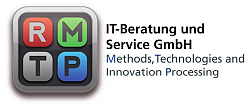Medium-sized companies in this country are struggling with high-cost pressure coupled with limited access to resources. It is therefore essential to keep pace with modern developments and technologies in order to remain competitive in the long term. This, in turn, requires a suitable IT strategy that entails quick-wittedness and flexibility without jeopardizing established structures.
Short-term and long-term IT planning in contradiction
The market demands quick answers and short implementation cycles from companies. To realize this, new technological approaches such as artificial intelligence must be established quickly in business projects. In contrast, however, IT infrastructure plans often have a medium- to long-term horizon in terms of transformation. Methods designed for rapid implementation, such as rapid prototyping or agile project management, clash with stability-oriented and process-related IT operations. The challenge is to synchronize the different speeds and approaches. A frequently selected and widespread IT strategy in this context is two-speed IT.
IT strategy: Two-speed IT as an interim solution?
Two-speed IT relates to the company’s own information technology and is a two-pronged approach. On the one hand, IT comprises central, established systems. On the other hand, a quickly adaptable, completely self-sufficient IT is operated for the implementation of digital projects. At least for a limited period of strong transformation requirements, this IT strategy can eliminate some hurdles. However, two-speed IT solutions must always be implemented in a precisely fitting and individualized manner in order to bring about the desired success. This is where RMTP’s consulting services come into play.
Best practice methods and tools
The implementation of “two-speed IT” requires intensive involvement of the business departments and the IT area. RMTP also recommends establishing the approach as part of a continuous improvement process, as new requirements are constantly being added. These are increasingly regulatory in nature. In addition, the transformation of IT to meet business requirements must be explicitly anchored in the overall organization as an ongoing process.
In this context, RMTP’s experts use best practice methodologies and frameworks such as COBIT5 and COBIT 2019. Our expertise lies particularly in the areas of governance, IT strategy as well as value, resource, and risk management. Decades of experience of our employees at home and abroad, as well as in different company sizes also speak for RMTP. The consultants are primarily specialized in the management of large-volume programs and projects.
In addition to methods and tools, RMTP offers various consulting approaches for the (further) development of IT strategy. In addition, the portfolio covers all relevant aspects of IT governance.
TO THE TOPIC:
methods and tools – IT governance
